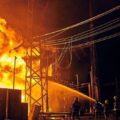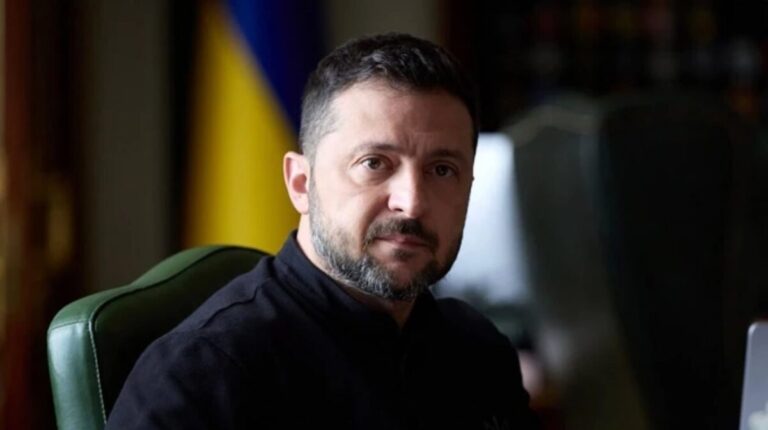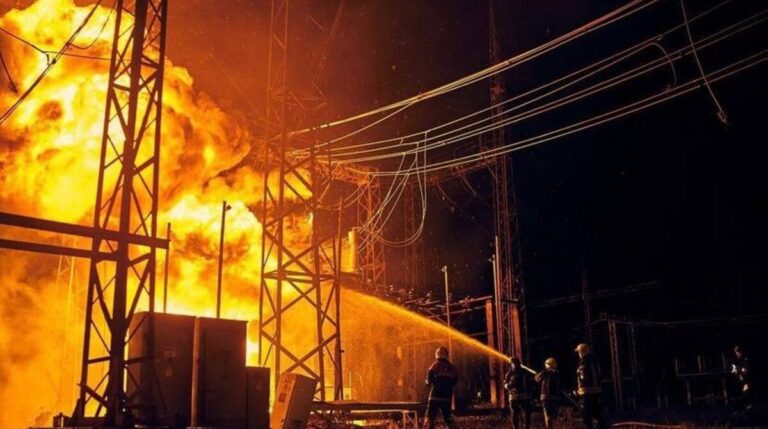
Blackout Schedules in Ukraine 2025: Why the Country Lives by the Clock Again and Who Suffers Most
Power outage schedules have once again become part of daily life for millions of Ukrainians. However, unlike the winter of 2022/2023 and the summer of 2025, the current restrictions affect only part of the country mainly the central and eastern regions, while residents of the western regions almost do not feel the lack of electricity. This situation is the result of a change in the tactics of Russian attacks and the specifics of the power system’s operation during wartime.
Since mid-October 2025, the Russians have carried out a series of massive attacks on Ukraine’s critical infrastructure, using hundreds of drones and missiles. The peculiarity of this campaign is its targeting: the strikes were focused on power generation and transmission systems on the left bank of the Dnipro River and in the central regions.
The goal of the Russian tactic is to divide the country’s power system into two parts and complicate the transfer of electricity from west to east. This tactic is confirmed by analysts’ statements:
“As a result, residents of the center and east of Ukraine, where industry is concentrated and most of the country’s population lives, were left without power.”
Kyiv, Chernihiv, Dnipro, and other large cities are forced to live according to outage schedules. At the same time, residents of western regions have hardly felt the deficit it is in these regions that major nuclear power plants (Rivne, Khmelnytskyi) are located, as well as significant development of distributed generation.
Why the West Remains With Electricity: Structure of the Power System and New Investments
Historically, the energy infrastructure of the western regions was built with an orientation toward exports to Europe. After independence, interregional lines were built, but even now the ability to transfer a significant volume of electricity from west to east remains limited.
The western region gained an advantage due to:
- the presence of powerful nuclear power plants that were almost untouched by attacks,
- active implementation of distributed generation projects (solar and small power plants),
- geographic distance from the front line.
That is why “in the west of the country, electricity was almost never cut off, because these regions are safer and businesses have implemented a significant number of distributed generation projects there.”
Restrictions for the Population and Industry: How the Outage Policy Has Changed
Outages began in mid-October 2025, when massive strikes damaged dozens of generation and distribution facilities. After the start of the heating season on October 30, the state of the power system improved somewhat: in many cities, outage schedules for the population were temporarily canceled, but restrictions for industrial consumers remained.
“Hourly power outages for the population have been canceled throughout Ukraine. In some regions, power limitation schedules for industrial consumers continue until 19:00,” – these were the current data as of October 30.
However, already on November 2, due to the consequences of a massive attack on energy facilities, a forced return to hourly schedules for all regions was announced.
“From 15:00 to 22:00, hourly outage schedules will be applied… The time and scope of the restrictions may change,” – official sources warn.
How Long Could Outages Last This Winter: Expert Assessments
Former Energy Minister Olha Buslavets states: “after each massive attack on the power system, the chances for rapid restoration and return to the previous level of generation become less and less.”
She warns that residents of front-line and industrial regions should prepare for longer restrictions, especially in winter.
“Consumption restrictions are possible even in the western regions of the country. However, they will be insignificant because there is more than enough capacity to supply these regions,” adds Buslavets.
Analysts also point out that even a full launch of all nine nuclear power plant units will not radically solve the situation generation is concentrated in the west, and transferring it to the east is difficult due to damaged infrastructure.
Why Kyiv Remains in the Risk Zone
Electricity market experts (ExPro Consulting) and specialized analysts note Kyiv’s particular vulnerability.
“Kyiv will continue to remain a risk region. It may happen that outages in Kyiv will be longer than in other cities,”says Daria Orlova.
Director of programs at NTC “Psycheya” Hennadii Riabtsev points out:
“Electricity consumption over the past week was like in January. According to the outage schedules, the deficit in the power system was about 2 GW,” he says.
He also adds that the start of the heating season will not fundamentally change the situation the capacity deficit remains, and the infrastructure needs repairs.
Post List
As of early November 2025, the energy situation in Ukraine remains precarious and depends on further massive attacks and the pace of critical infrastructure restoration.
The current tactic of the enemy is to purposefully destroy generation and main lines to deprive, first of all, major industrial and densely populated centers of electricity. The west of the country has more autonomous capacity, but energy transfer remains vulnerable.
The conclusion is simple: the scenario of prolonged outages, especially in the central and eastern regions, is entirely realistic. In Kyiv, Dnipro, Chernihiv, and other cities, restrictions may be more frequent and longer than last year. Even the launch of all nuclear power plants will not be a “magic pill” for the system.
In these conditions, consumers are advised to save electricity, follow official updates, and prepare for possible prolonged outages.
The main challenge is to maintain system stability until the end of the heating season, adapting to the new realities of war and destruction.















